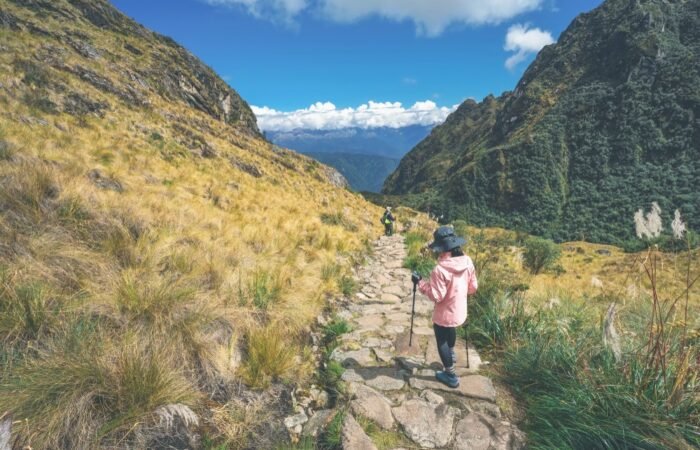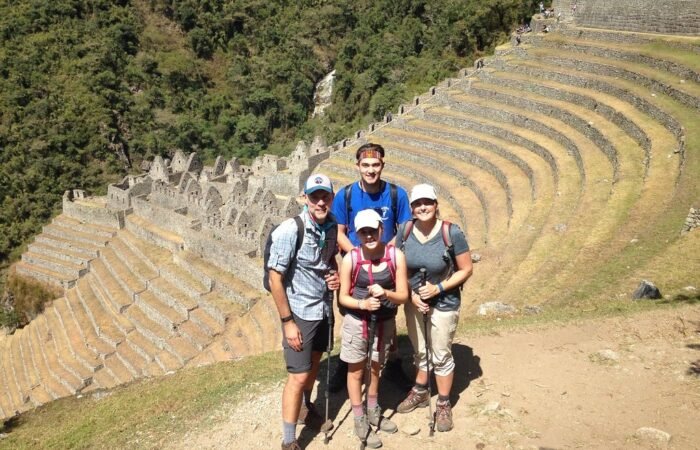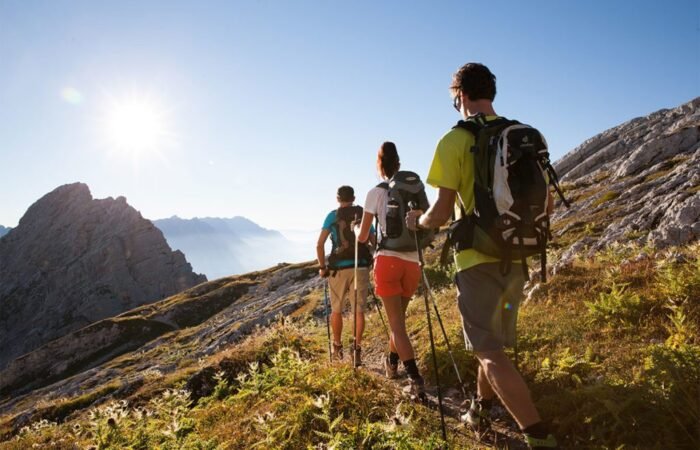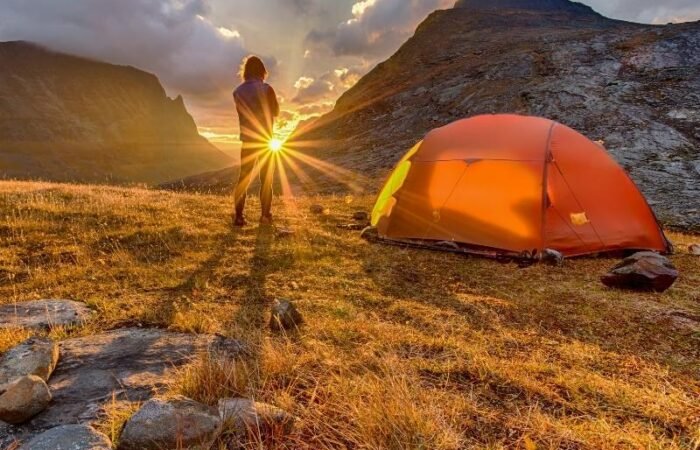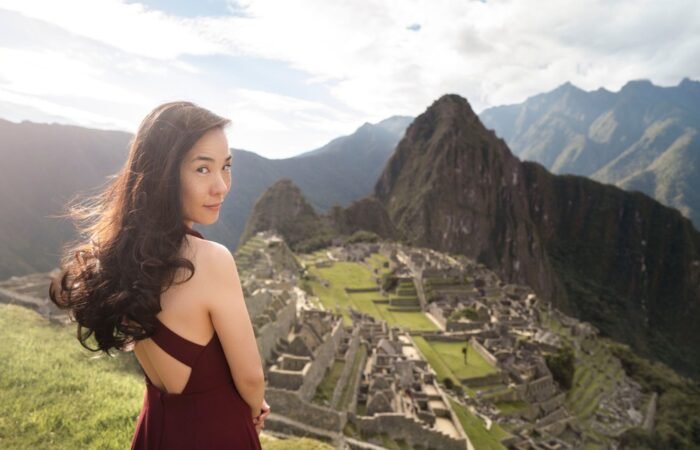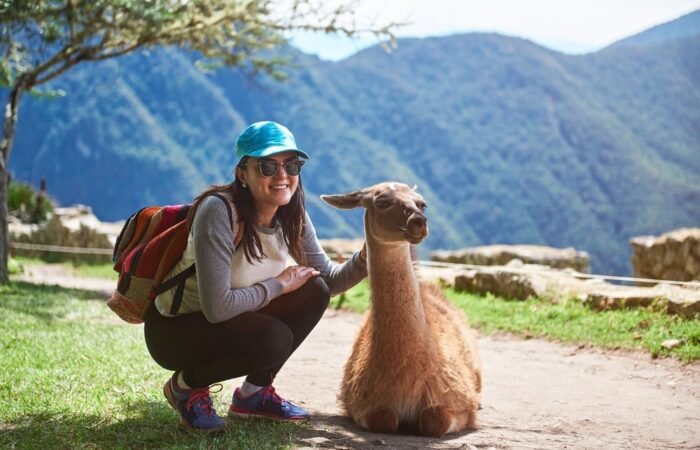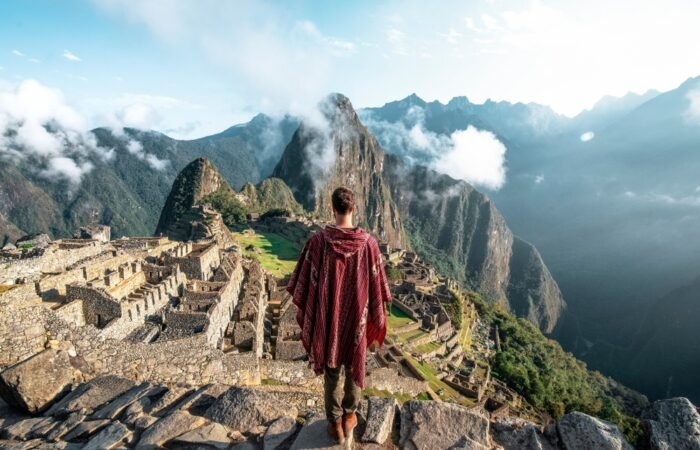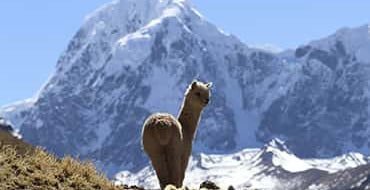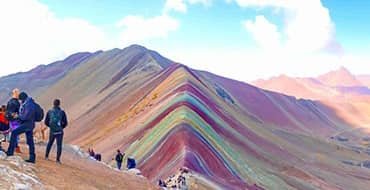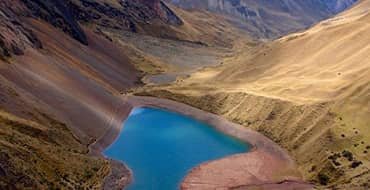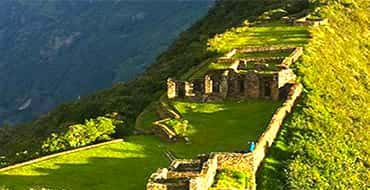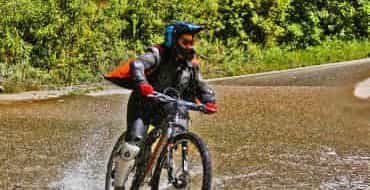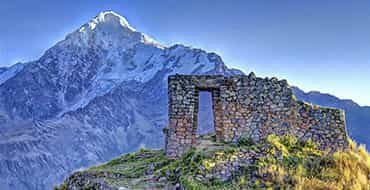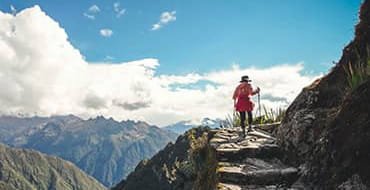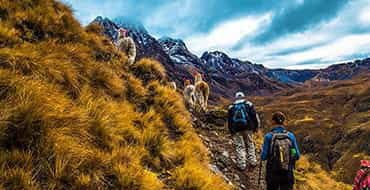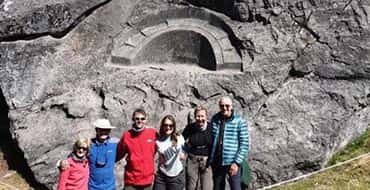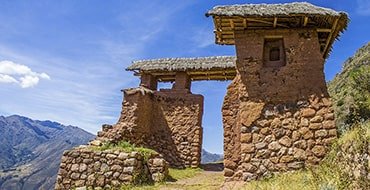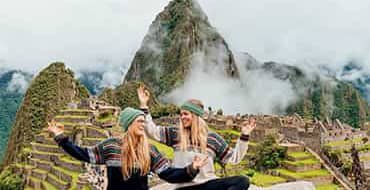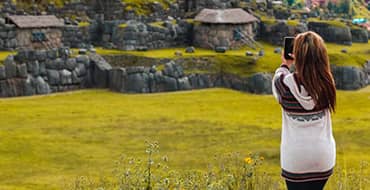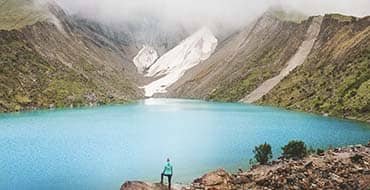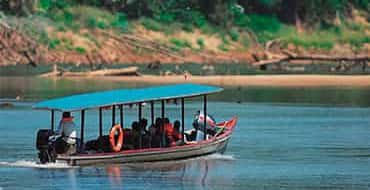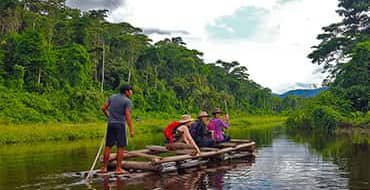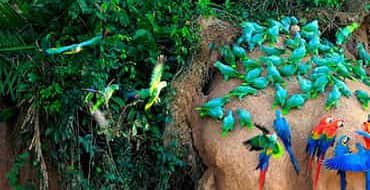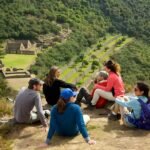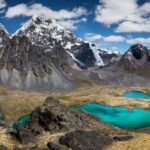

Introduction to the Treks
Perched amid the majestic Andes Mountains, Peru is home to two of the most renowned trekking experiences in the world: the Salkantay Trek and the Classic Inca Trail. Each of these treks offers a unique perspective on the breathtaking landscapes, rich culture, and ancient history of the region. Travelers from around the globe are drawn to these trails for their stunning vistas and the chance to immerse themselves in the heritage of the Inca civilization.
The Classic Inca Trail is perhaps the most famous trek in Peru, taking adventurers on a historic route that leads directly to the iconic citadel of Machu Picchu. This trail, limited to a certain number of trekkers per day to preserve its integrity, features ancient stone pathways, lush vegetation, and several archaeological sites, making it a breathtaking journey through both nature and history.
On the other hand, the Salkantay Trek provides a more rugged and secluded alternative for those seeking to explore the dramatic landscapes of the Andes. Named after the towering Salkantay Mountain, which towers at 6,271 meters (20,574 feet), this trek showcases diverse ecosystems, from tropical forests to snow-capped peaks. The Salkantay Trek is known for its relative solitude compared to the Classic Inca Trail, making it a favored choice for adventurers looking for a unique and less crowded route.
Both treks are characterized by their breathtaking scenery and the thrill of reaching Machu Picchu, yet they present different challenges and experiences. Understanding these differences is crucial for potential trekkers as they embark on planning their adventure in Peru. By comparing the highlights and challenges of both treks, travelers can better identify which journey aligns with their personal preferences and adventure goals.


Comparison of Scenery and Landscape
The choice between the Salkantay Trek and the Classic Inca Trail largely hinges on the varying landscapes and scenic experiences each trek offers. The Salkantay Trek is renowned for its breathtaking mountain vistas, most notably its namesake, Salkantay Mountain. Towering at over 6,000 meters, Salkantay presents an awe-inspiring backdrop featuring snow-capped peaks, glacial lakes, and high-altitude ecosystems. Hikers traversing this trail encounter diverse altitudinal zones, from lush plantations to arid mountainous wilderness, providing a stunning contrast that appeals to adventurers drawn to dramatic and rugged terrains. The opportunity to photograph majestic mountains and pristine nature is unmatched, offering a genuine connection to the vastness of the Andean landscape.
In contrast, the Classic Inca Trail offers a different yet equally captivating experience. This trek is characterized by its combinations of ancient ruins and lush cloud forests. As hikers embark on this historical journey, they discover remnants of the Inca civilization, including impressive archaeological sites such as Wiñay Wayna and Machu Picchu. The lush environment, enriched with vibrant flora and fauna, envelops trekkers with greenery and the sounds of nature, reminiscent of the rich biodiversity found in the Andean region. The views along this path often transition from thick forests to panoramic vistas that showcase the sacred valley below, providing unique photography opportunities that blend history with nature.
Ultimately, the decision rests on individual preferences. Those seeking an exhilarating mountain adventure with grand landscapes may gravitate toward the Salkantay Trek. Conversely, hikers interested in an immersion of cultural heritage alongside tranquil natural beauty may prefer the Classic Inca Trail. Each trek presents a distinct environment that shapes the overall trekking experience, catering to various interests and scenic photography aspirations.


Difficulty and Fitness Level Required
When comparing the Salkantay Trek with the Classic Inca Trail, understanding the differing levels of difficulty and fitness requirements is essential for making an informed choice. The Salkantay Trek is often regarded as the more challenging of the two options, primarily due to its higher altitude and varied terrain. The trek reaches elevations exceeding 4,600 meters (15,400 feet), which can pose a significant challenge for individuals who are not acclimatized or who have underlying health concerns. Additionally, the Salkantay Trek includes steep ascents and descents, rocky paths, and may experience unpredictable weather conditions, further enhancing its difficulty. As such, trekkers embarking on this journey should possess a higher level of fitness and be capable of enduring prolonged physical exertion over several days.
In contrast, the Classic Inca Trail, while still a demanding trek, tends to be more accessible to a broader range of fitness levels. This trail comprises well-maintained paths and a more gradual uphill climb, enabling those with moderate fitness levels to participate more comfortably. Trekkers on the Inca Trail can expect to ascend to heights of around 2,700 meters (8,860 feet), a notably lower altitude compared to the Salkantay Trek. Although the Inca Trail still necessitates a degree of fitness, the infrastructure and support provided make it a more manageable option for many. Such factors include the presence of established campsites and the potential for greater social interaction with fellow trekkers, which can enhance the overall experience.
Ultimately, when selecting between the Salkantay Trek and the Classic Inca Trail, it is crucial to assess individual physical readiness. By evaluating one’s fitness capabilities and understanding the requirements associated with each trek, adventurers can ensure they choose the option that aligns best with their abilities, ensuring a safe and enjoyable experience in the beautiful landscapes of Peru.


Cultural Experiences and Historical Significance
The choice between the Salkantay Trek and the Classic Inca Trail extends beyond mere scenery; it encompasses rich cultural experiences and historical significance that deeply enhance the trekking journey. The Classic Inca Trail is renowned for its direct connection to the Incan civilization. This trek immerses adventurers in a historical narrative as they traverse through well-preserved archaeological sites such as Huayna Picchu and Machu Picchu. Each stone and structure along the route tells a story of ancient architectural ingenuity and the cultural practices of the Inca, offering trekkers a profound appreciation for this remarkable civilization.
In contrast, the Salkantay Trek emphasizes interaction with local Andean communities, providing a different yet equally enriching cultural experience. While the route may not feature as many renowned archaeological sites, it presents trekkers with opportunities to engage directly with local inhabitants. Visitors can witness traditional lifestyles and customs, offering insights into the rich tapestry of Quechua culture, which persists to this day. This engagement allows adventurers to understand the significance of agricultural practices, local crafts, and ancestral traditions that vary from region to region.
Furthermore, this trek to Salkantay culminates in visits to community markets and festivities, allowing trekkers to experience the vibrancy of Andean life firsthand. Such immersive experiences can strongly influence one’s decision on which trek to pursue, depending on whether the focus is on historical exploration or community connection. Ultimately, both treks provide valuable cultural takeaways, fostering a deeper connection to the region’s heritage. These contrasting experiences enable trekkers to choose an adventure aligned with their interests, whether they lean towards the historical allure of the Inca Trail or the authentic cultural experiences provided by the Salkantay Trek.


Duration and Itinerary Overview
The duration and itinerary of each trek play a vital role in selecting the most suitable option for your adventure in the majestic Peruvian landscape. The Classic Inca Trail, widely recognized for its rich cultural significance and historic routes, typically spans four days. This trek allows hikers to immerse themselves in breathtaking scenery and ancient ruins, culminating in a grand arrival at the iconic Machu Picchu on the fourth day. The itinerary encompasses a variety of terrains, including lush subtropical forests and high-altitude mountain paths, providing diverse experiences each day.
On the first day, trekkers generally begin at the km 82 marker and hike through the Sacred Valley, passing by archaeological sites such as Llactapata. Day two is often considered the most strenuous, with the ascent to Dead Woman’s Pass at an elevation of 4,215 meters. Day three involves traversing picturesque valleys and visiting the ancient ruins of Sayhuite, before finally descending to Machu Picchu via the Sun Gate on the last day.
In contrast, the Salkantay Trek offers a more varied and longer experience, typically lasting from five to seven days, depending on the specific itinerary chosen. This trek provides adventurers with the opportunity to explore a diverse range of ecosystems, including snow-capped peaks, lush jungles, and stunning waterfalls. The journey begins at the small village of Mollepata and includes a challenging ascent to Salkantay Pass, the highest point of the trek at 4,600 meters. Hikers also have the chance to experience local culture firsthand as they pass through traditional Andean villages.
Ultimately, understanding the durations and itineraries of both the Classic Inca Trail and the Salkantay Trek will assist travelers in planning their schedules effectively and setting realistic expectations for their trek experience.


Accommodation Options
When planning your trekking adventure in Peru, selecting the right accommodations can significantly enhance your overall experience. The Classic Inca Trail and the Salkantay Trek offer distinct lodging arrangements that cater to varying preferences for comfort and adventure. Understanding these options allows trekkers to make informed decisions that align with their expectations.
The Classic Inca Trail is renowned for its organized camping setups. As part of the trek, hikers will typically enjoy a fully supported journey where tents, dining areas, and toilet facilities are provided. Camp amenities are designed to deliver a structured experience, with professional guides and porters ensuring a seamless journey. Participants can expect to stay in two-person tents equipped with sleeping bags and pads, enhancing comfort while being close to nature. This arrangement not only preserves the integrity of the natural environment but also presents a communal vibe where trekkers can bond over shared experiences around the campfire.
In contrast, the Salkantay Trek presents more variability in accommodation. This trek offers the option to camp as well as the chance to stay in more comfortable lodges or mountain huts, depending on the package selected. For trekkers seeking a blend of comfort and adventure, this diversity can be appealing. The lodge accommodations often feature warm beds, shared facilities, and meals prepared by local chefs, allowing trekkers to rest after a day of exploring. Moreover, the option for hybrid accommodation can also include glamping tents, which cater to those desiring an outdoor experience without compromising on comfort.
Ultimately, the choice between these accommodation types affects the overall trekking experience, emphasizing the importance of selecting an option that resonates with one’s personal preferences and desired level of comfort during this unforgettable adventure.


Cost Comparison and Budget Considerations
When planning your adventure to Machu Picchu, understanding the cost differences between the Salkantay Trek and the Classic Inca Trail is essential for effective budgeting. Both trekking options present unique financial commitments, covering permits, guides, transportation, and accommodation. For the Classic Inca Trail, trekkers will need to secure a permit, which can range from $40 to $80. However, due to limited availability, booking well in advance is crucial. Conversely, the Salkantay Trek does not require a permit, allowing for more flexibility in planning.
Guide services are another significant component of the overall cost. The Classic Inca Trail typically mandates hiring an approved guide, which can cost between $150 to $300 per person, depending on the package selected. In comparison, while guided tours for the Salkantay Trek are recommended, travelers have the option to trek independently, potentially lowering the overall expenditure. It is worth noting that if opting for a guide on the Salkantay Trek, prices may still range from $50 to $200, but could result in different service standards.
Transportation is another factor to consider in both treks. The Classic Inca Trail usually includes transportation to and from the trailhead, often part of guided packages. The Salkantay Trek may necessitate additional costs for transport to Mollepata or Soraypampa, which could add $30 to $60. Accommodations also vary; the Classic Inca Trail often involves more structured camping or lodges, while the Salkantay Trek offers diverse lodging options from basic camping to more comfortable lodges.
Hidden costs such as tips for guides and porters, meals on rest days, or additional equipment rental should not be overlooked. By carefully assessing these elements, adventurers can create a realistic budget that accommodates their preferences while ensuring a rewarding trekking experience.

Weather Conditions and Best Time to Trek
Understanding the weather conditions is crucial for anyone planning to undertake the Salkantay Trek or the Classic Inca Trail. Both treks, set against the breathtaking backdrop of the Peruvian Andes, experience distinct seasonal variations that can significantly impact the trekking experience. Generally, the best time to hike these trails is during the dry season, which lasts from May to September. During this period, trekkers can expect clearer skies, warmer temperatures during the day, and cooler nights.
The Salkantay Trek, which ascends to higher altitudes, particularly around Salkantay Mountain, is subject to more extreme weather fluctuations. In the dry season, daytime temperatures can range between 10°C to 20°C (50°F to 68°F), while at night, it can plummet to near freezing at higher elevations. The wet season from October to April brings heavy rainfall, often resulting in muddy trails and limited visibility. Consequently, the best time for this trek is ideally from late May to early September.
In contrast, the Classic Inca Trail features a slightly more temperate climate. However, it is important to note that rainfall can still occur during the dry season, particularly in April and September. Daytime temperatures typically hover between 18°C to 22°C (64°F to 72°F), whereas nighttime temperatures may drop to around 0°C to 7°C (32°F to 45°F). Trekkers often experience the influx of crowds during June to August, coinciding with the peak trekking season, which can lead to a more social trekking atmosphere, albeit with less solitude.
For those seeking a less crowded experience while still enjoying favorable weather, late September to early October might be suitable, as it often features milder weather and fewer trekkers on both trails. Ultimately, the best time to embark on either trek depends on an individual’s weather preference and willingness to navigate potential crowds.


Final Thoughts: Choosing Your Adventure
Deciding between the Salkantay Trek and the Classic Inca Trail is ultimately a personal choice that requires careful consideration of various factors. Both treks offer unique experiences, captivating landscapes, and opportunities to immerse oneself in the rich culture of Peru. However, the optimal choice largely depends on individual preferences and priorities.
For those prioritizing physical fitness and endurance, the Salkantay Trek presents a more demanding challenge, traversing varied altitudes and rugged terrain. This trek may appeal to adventurous spirits looking for a rewarding physical accomplishment. In contrast, the Classic Inca Trail is moderately strenuous and often preferred by those who seek a balance between adventure and accessibility. This route allows trekkers to experience iconic Incan sites while enjoying a more manageable hiking experience.
Budget considerations also play a significant role in the decision-making process. The Salkantay Trek tends to be more affordable, offering flexible options regarding gear and guides. Conversely, the Classic Inca Trail often requires advance permits and typically incurs higher costs due to its popularity and the need for dedicated support. Evaluating your budget early on can help align your choice with financial expectations.
Cultural experiences provide another layer to this decision. The Classic Inca Trail is steeped in history, showcasing a number of ancient ruins that speak to Incan civilization. Those interested in culture may find this trek particularly rewarding. Alternatively, the Salkantay Trek allows for diverse landscapes, from snow-capped peaks to lush jungles, appealing to those who desire a blend of natural beauty and cultural interaction.
Ultimately, reflecting on your individual priorities—be it fitness, budget, cultural interactions, or scenic preferences—will empower you to choose the trekking adventure in Peru that truly aligns with your desires and aspirations. Each trail promises unforgettable experiences, waiting to be discovered.
